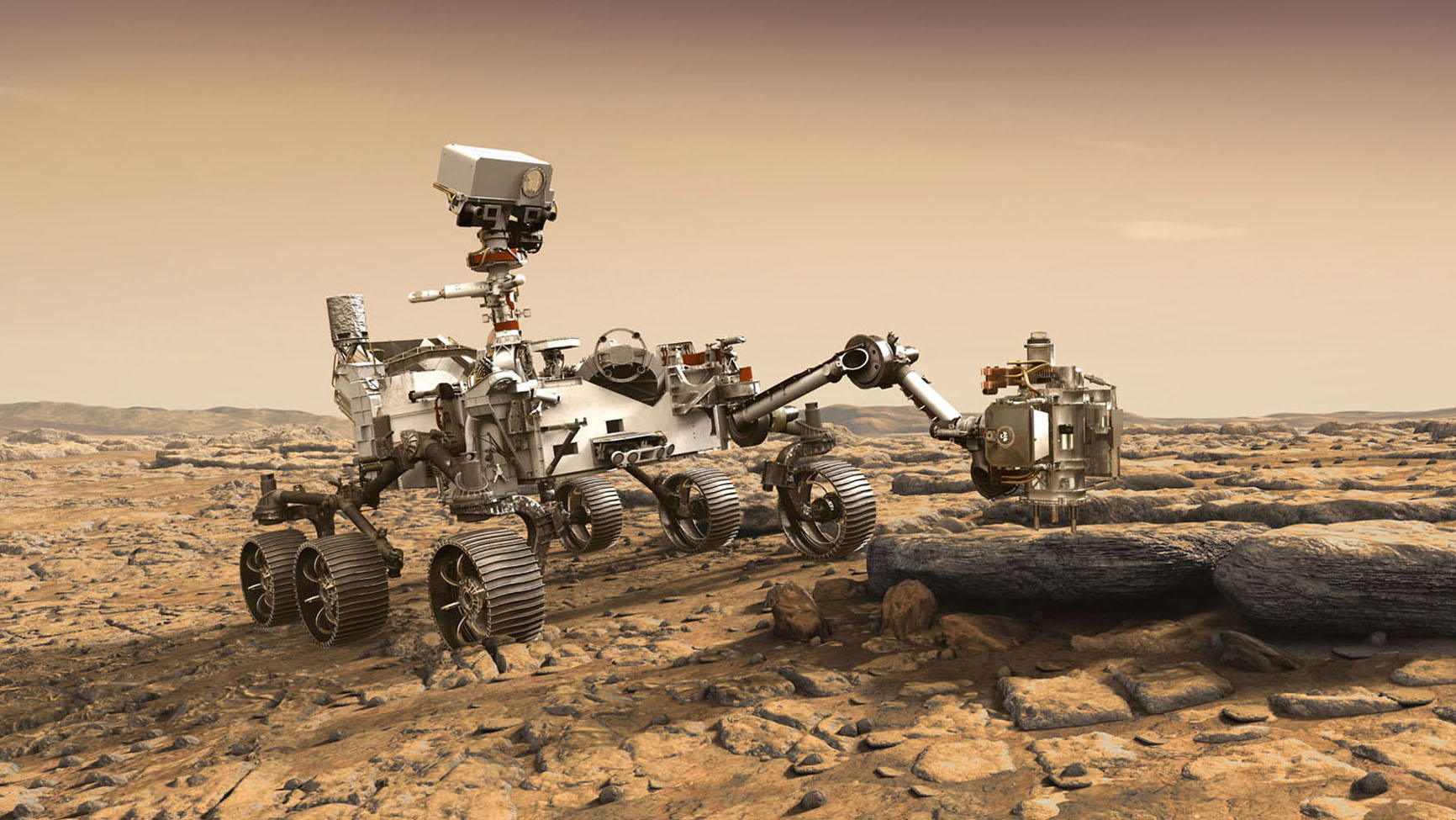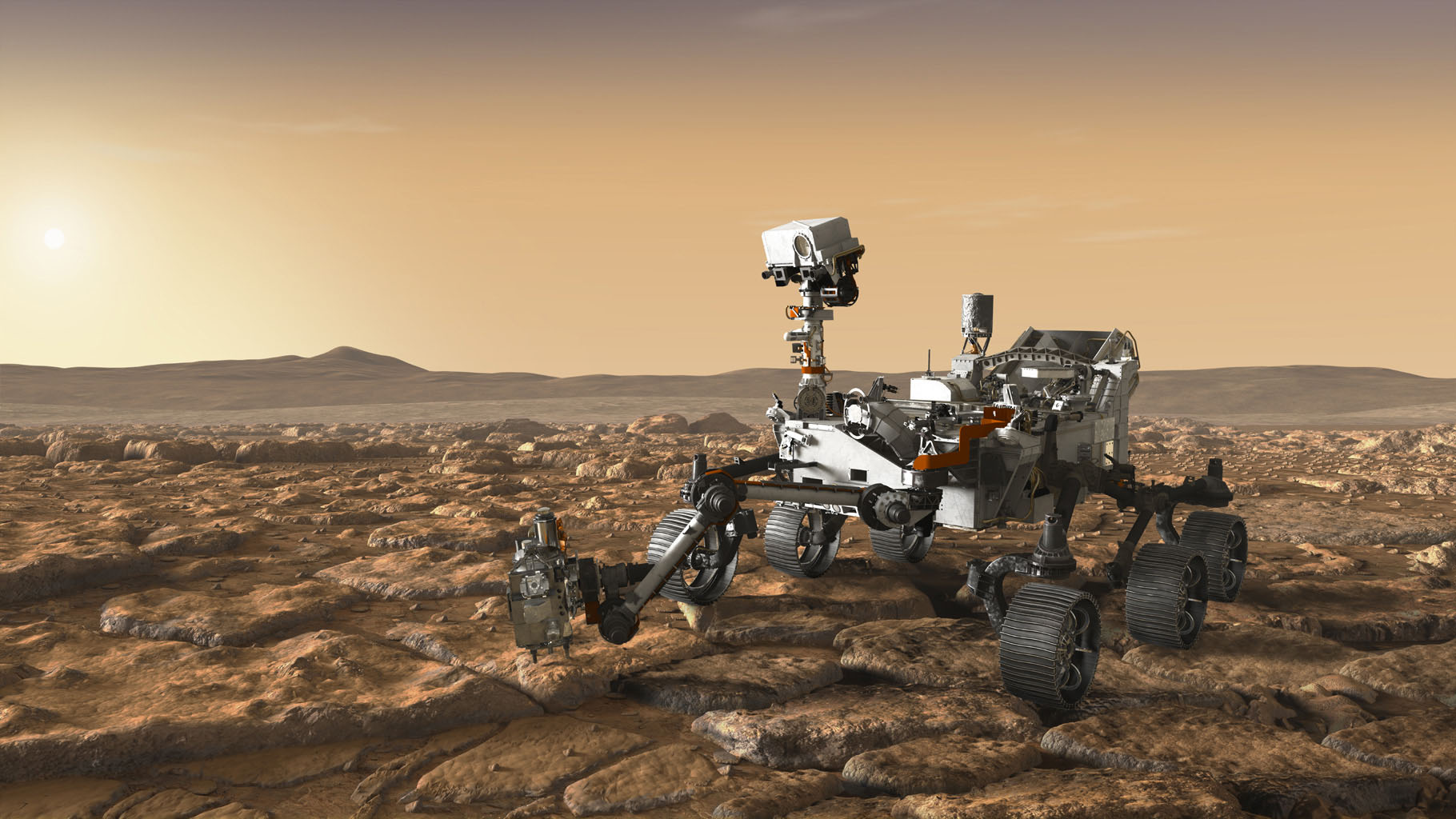NASA's Next Mars Rover: A Life-Hunting Curiosity 2.0
NASA's upcoming Mars 2020 rover will be a souped-up version of the highly accomplished robot that touched down on the Red Planet in August 2012, agency officials said.
Engineers are reusing the designs for about 85 percent of the Curiosity rover's hardware to save time and money on the new robot, but the remaining 15 percent includes a number of innovations, such as advanced navigation and imaging systems.
In its five-plus years on Mars, the car-size Curiosity — also known as the Mars Science Laboratory (MSL) — has found extensive evidence that the Red Planet could have supported microbial life in the ancient past. But the 2020 rover (which is scheduled to launch in 2020, as its name suggests) will go a step further, searching for actual signs of past Mars life. [NASA's Mars 2020 Rover in Pictures]
The new robot will do this via on-site measurements, and it will also collect and cache samples that NASA plans to bring back to Earth for analysis someday (though no such return mission is currently on the agency's books).

"Whether life ever existed beyond Earth is one of the grand questions humans seek to answer," Mars 2020 project scientist Ken Farley, of NASA's Jet Propulsion Laboratory (JPL) in Pasadena, California, said in a statement. "What we learn from the samples collected during this mission has the potential to address whether we're alone in the universe."
Such work requires some fancy instruments. Mars 2020 will have an X-ray spectrometer to examine targets as small as a grain of table salt, and a laser to excite carbon atoms on the surface, allowing for more precise investigations. The rover will also carry the first ground-penetrating radar to be deployed on Mars, which will extend up to 33 feet (10 meters) below the surface to study the distribution of water, rock and ice.

Mars 2020 will also carry improved versions of some Curiosity gear, including a zoom lens, several color cameras and a laser that can evaporate soil and rocks to look at their chemistry.
Get the Space.com Newsletter
Breaking space news, the latest updates on rocket launches, skywatching events and more!
"Our next instruments will build on the success of MSL, which was a proving ground for new technology," Mars 2020 program executive George Tahu, of NASA headquarters in Washington, D.C., said in the same statement. "These will gather science data in ways that weren't possible before."
Like Curiosity, Mars 2020 will land with the aid of a rocket-powered sky crane. But its touchdown will be aided by a new system called terrain-relative navigation. While the rover's descent stage is approaching Mars, computer vision will compare what it sees with terrain maps already loaded on board. This will make it even easier for the descent stage to guide itself to a safe landing site, as it will correct its course on the fly, NASA officials said.
Mars 2020 will also have a range trigger, which will use location and velocity data to figure out when to deploy its main parachute. NASA officials said this feature will narrow the landing ellipse by more than 50 percent. Future missions will take advantage of the same technology to land close to the samples gathered by Mars 2020, they added.
"Terrain-relative navigation enables us to go to sites that were ruled too risky for Curiosity to explore," JPL's Al Chen, Mars 2020 entry, descent and landing lead, said in the same statement. "The range trigger lets us land closer to areas of scientific interest, shaving miles — potentially as much as a year — off a rover's journey."
Though the landing site for Mars 2020 hasn't been selected yet, in February the science community identified three finalists, out of an original pool of eight locations. The three sites are Jezero Crater (an ancient lake bed), Northeast Syrtis (where warm waters may have chemically altered rocks under the surface) and Columbia Hills (which may have hosted hot springs in the ancient past).
"In the coming years, the 2020 science team will be weighing the advantages and disadvantages of each of these sites," Farley said. "It is by far the most important decision we have ahead of us."
Follow us @Spacedotcom, Facebook or Google+. Originally published on Space.com.
Join our Space Forums to keep talking space on the latest missions, night sky and more! And if you have a news tip, correction or comment, let us know at: community@space.com.

Elizabeth Howell (she/her), Ph.D., was a staff writer in the spaceflight channel between 2022 and 2024 specializing in Canadian space news. She was contributing writer for Space.com for 10 years from 2012 to 2024. Elizabeth's reporting includes multiple exclusives with the White House, leading world coverage about a lost-and-found space tomato on the International Space Station, witnessing five human spaceflight launches on two continents, flying parabolic, working inside a spacesuit, and participating in a simulated Mars mission. Her latest book, "Why Am I Taller?" (ECW Press, 2022) is co-written with astronaut Dave Williams.









